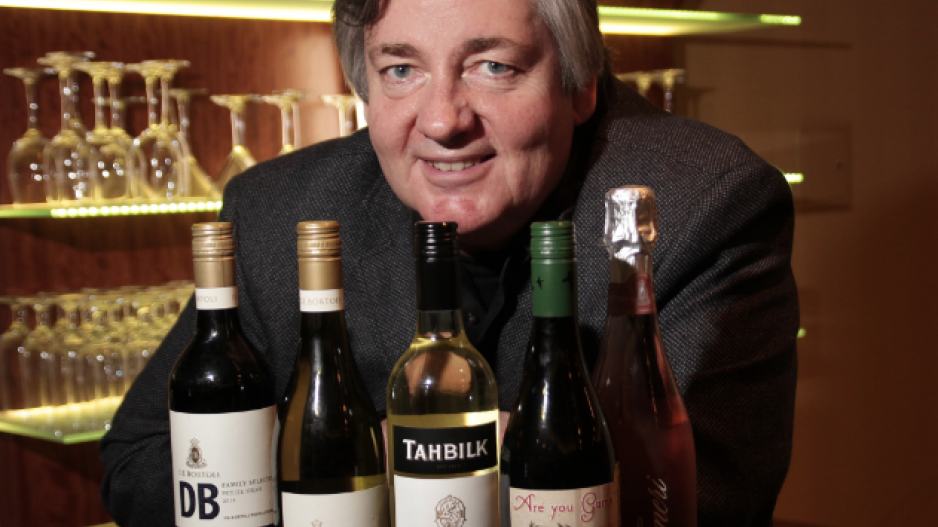The privilege of becoming the theme region at the Vancouver International Wine Festival (VIWF) can cost about $500,000, but countries eagerly pay the bill because they view the extravaganza, which runs until March 1, as a wise investment that will influence wine-buying decisions in the province and beyond.
No country needs a sales bump in B.C. more than Australia, which is hosting the festival this year.
The land Down Under has watched its B.C. sales decrease each year since hitting an all-time high of $131.2 million in 2007, when the country last hosted VIWF.
Countries aiming to become theme regions at VIWF tend to be those seeking to boost sales, raise market share and educate buyers about the country’s wine-producing regions and selling points.
France achieved those targets last year when it spent an undisclosed amount to host VIWF, which ran for seven days starting February 24 and included a gala dinner before the festival’s official start.
Hosting the event helped give French wine sales a strong first quarter that lifted full-year 2014 sales by 7.35% to $59.5 million, and by 4.2% to 2.5 million litres, according to British Columbia Liquor Distribution Branch (BCLDB) statistics.
The first quarter of 2014 alone gave France a sales jump of 13.4% in dollars and 5.7% in volume compared with the same quarter in 2013.
“It was a nice bump,” said Johanna Raynaud, who is public relations director for Sopexa Canada, which organized France’s involvement at VIWF last year and is responsible for all of France’s wine marketing across Canada.
California was the festival’s theme region the previous year; it too was able to watch its wine sales in B.C. jump in both dollars spent and volume purchased in 2013.
Australian wine industry insiders are aware of VIWF’s influence and have been keen to get in on the action.
British Columbians spent $78.5 million on Australian wine in 2014. That’s 40.2% less than in 2007. The province’s wine buyers also purchased 39.6% less Australian wine by volume in 2014, compared with 2007.
“That [sales and volume drop] puts us in a position to rethink our messaging and how we present ourselves,” said Shelley Hamer-Jackson, who is Wine Australia’s market development and communications manager for North America. “Our goal is to reinvigorate the category by driving consumers back and introducing them to the new face of Australia.”
Australia wants to be known for more than being home to big, bold shiraz wines, Hamer-Jackson said. Increasingly, the country is producing quality cool-climate white wines and non-traditional varietal wines.
Growers in the Hunter Valley, near Sydney, for example, tout their Sémillon wines as being some of the best in the world.
“Existing grape varieties are evolving too,” she said. “Shiraz and Chardonnay have undergone an evolution and now there’s a whole spectrum of styles to choose from.”
Wine Australia will pump close to $500,000 directly into hosting VIWF, with $225,000 of that coming from participating wineries. When money spent on travel, wine and other related costs are included, Australia’s hosting commitment will have a nearly $1.5 million effect on the region’s economy, she said.
Wine Australia’s spending also includes airfare and accommodation for 22 people who are either in the media or buy large volumes of wine for retail chains, such as California’s BevMo.
VIWF’s influence is far-reaching and continues to grow, said Harry Hertscheg, who has been the festival’s director since 2001.
“Various major media have said that no other festival comes close in Canada to our influence and few wine fairs anywhere can match our magnitude or joie de vivre,” Hertscheg said. “We use those testimonials to communicate with our partners.”
He believes that the better post-festival sales that theme regions enjoy stem partly from the VIWF partnering with the BCLDB, which holds in-store promotions to highlight the host region.
Raynaud said the BCLDB gave heightened visibility to French products last year. One initiative included a one-time purchase of pallets of wine from boutique French producers who did not have agents in B.C. and so would not otherwise have been able to get their products on B.C. store shelves.
This year, the BCLDB is increasing that one-time buy for boutique Australian wineries.
“Some of the wines that the BCLDB is buying are all iconic producers that you just can’t buy here,” Hamer-Jackson said. “Wines will range in price up to $100 or more.” •




